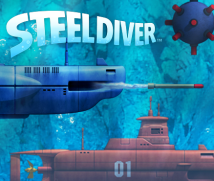6. Depth More Than Volume
Imamura-san, what did you find when you switched from the Nintendo DS system to the Nintendo 3DS system?
At first, the 3D wasn’t apparent at all.
No, not at all.
So it turned out the way it did after a lot of trial and error?
Yes. We thought we could just switch it over and it would look stereoscopic, but when we did, we couldn’t see it.
There wasn’t any depth at all. It was just vaguely sort of 3D-ish.
We were among the first to develop software for the Nintendo 3DS system, so a sufficient development kit didn’t exist at the time.
Ah, I see.
We tried a number of approaches, and then one day it suddenly started popping out.
That was impressive.
Yeah. Amazing. It started looking 3D about the day before our presentation. If it hadn’t, the whole thing might have ended.
(laughs)
No, it’s true!
Yeah.
But even though you were among the first ones, you ended up doing more than just introducing a sense of depth. It turned out great, including light filtering down from above the water surface.
At first, the bubbles didn’t look realistic, so we added a number of elements to make the game look more real.
It ended up looking a lot like an aquarium.
So I’m really glad we changed it over to the Nintendo 3DS system. But I think it would have turned out even better if Miyamoto-san had told us sooner that he wanted to make it for the Nintendo 3DS system! (laughs)
No, I mean... Okay. (laughs)
(laughs)
Lastly, I’d like each of you to say something to the fans.
It may be a little inaccessible for some people at first.
Wow! That’s quite a thing for the producer to say! (laughs)
Well, what I mean is the game world. (laughs)
So the gameplay isn't inaccessible.
No. We lowered those hurdles. There are certain hurdles, though. Once everyone gets over them, I think they will find this game to be incredibly fun. Once you’re able to move that big submarine around the way you want, a world awaits that you can thoroughly enjoy. I hope everyone will plumb those depths of the game.
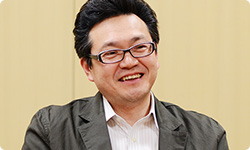
There’s a lot I would like to say. In particular, depth charges fall from above in the Missions mode. Since you move so slowly, avoiding them is a tense experience.
Because submarines don’t move quickly.
It feels just like when you watch a submarine movie. The enemy attacks and they need to get out of the way, so it’s tense. But that’s what makes it so real. You shout, “Hard a’ starboard!” and try to evade an attack, but then take a hit from a depth charge. I think the game does a good job presenting that kind of excitement. We also paid a lot of attention to when you suffer a hit and water starts pouring in. You really feel relieved when you narrowly avoid a hit, so I hope people enjoy that.
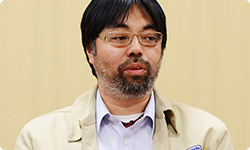
Like Sugiyama-san, I think this game has a high learning curve at the start, but once you get better at it, it’s all the more fun because of that.
You have to jump a high hurdle, but once you do, it feels great.
Right. I hope everyone will give it their best shot and enjoy operating a big submarine.

What I’d like to say is how, to put it in car terms, you have automatic cars and manual cars. Of course, driving an automatic is easier, but you can experience the joy of driving a car better with a manual transmission. Playing Steel Diver is like driving a car with a clutch. You have to learn how to do it: “If you don’t do this, it won’t move.” “Oh?” “If you don’t do this, it won’t stop.” “Okay, I see.” It’s really fun to do several things at once that you have learned.
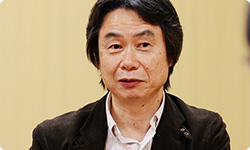
Learning how to do several things simultaneously is fun.
Right. Then sometimes you act without thinking and you’re like, “Whoa! No way! Did I just do that?!” (laughs) I don’t think it really applies to say this game has good or poor operability. It’s more fun if you just play the game saying “Whoa! Whoa!” So I hope people will give it a try.
It turned out to be quite a rewarding game. Lots of games made by EAD are that way, but I get an even stronger sense of that with Steel Diver. You didn’t just throw in more and more material, but rather you generated a surprising amount of fun within a limited world.
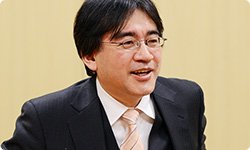
Making something concentrated requires a lot of work, like making something big and gorgeous. For example, making a single ring - even though it’s small - is as hard as making the kind of fancy dress with lots of ornamentation that you might wear to a ball.
A craftsman would put about the same amount of work into it.
So this time, we ruled out getting by with making lots of submarines or courses and instead focused on something limited that you could play again and again.
Several times, I actually told Miyamoto-san and Sugiyama-san that we should add more stuff, but they said it wasn’t necessary.
They wanted something with depth more than volume. By the way, Imamura-san, you have a history of coming up with striking characters, like for Star Fox and F-Zero. (laughs)
Yeah. (laughs wryly)
You didn’t give in to the temptation to create characters this time?
No. Sugiyama-san repeatedly told me “No!” about that, too! (laughs)
If you let him, Imamura-san will immerse himself in making characters.
(laughs)
Besides, he was director this time - not a designer.
But at the very end, they did let me draw the captains. (laughs) If there’s a sequel, I want to fill it out with all sorts of characters!
For that to happen, we need lots of people to play this one.
Right. So everyone reading this, please play Steel Diver!
(laughs) Thank you, everyone.
It was our pleasure.
